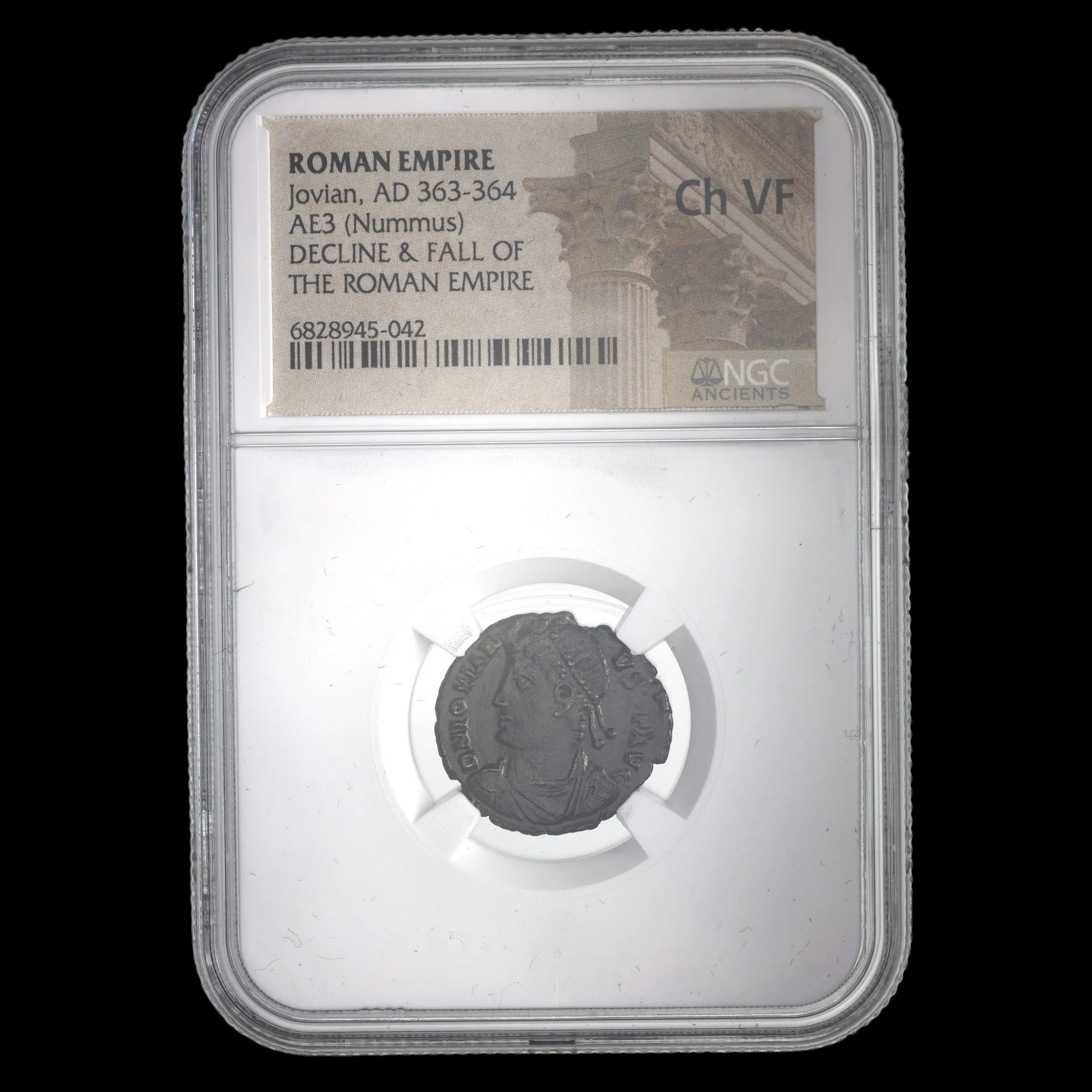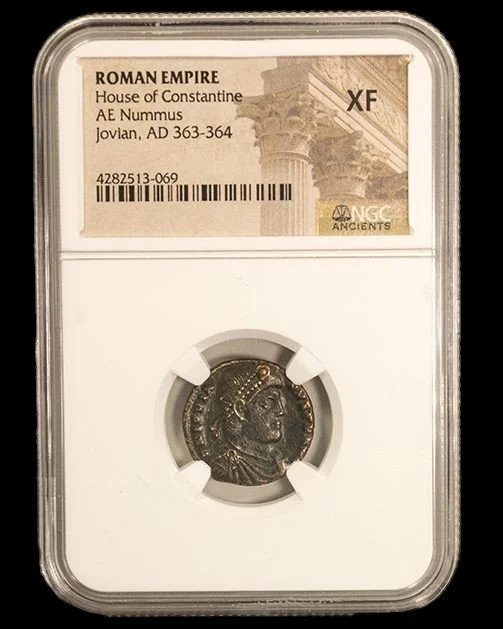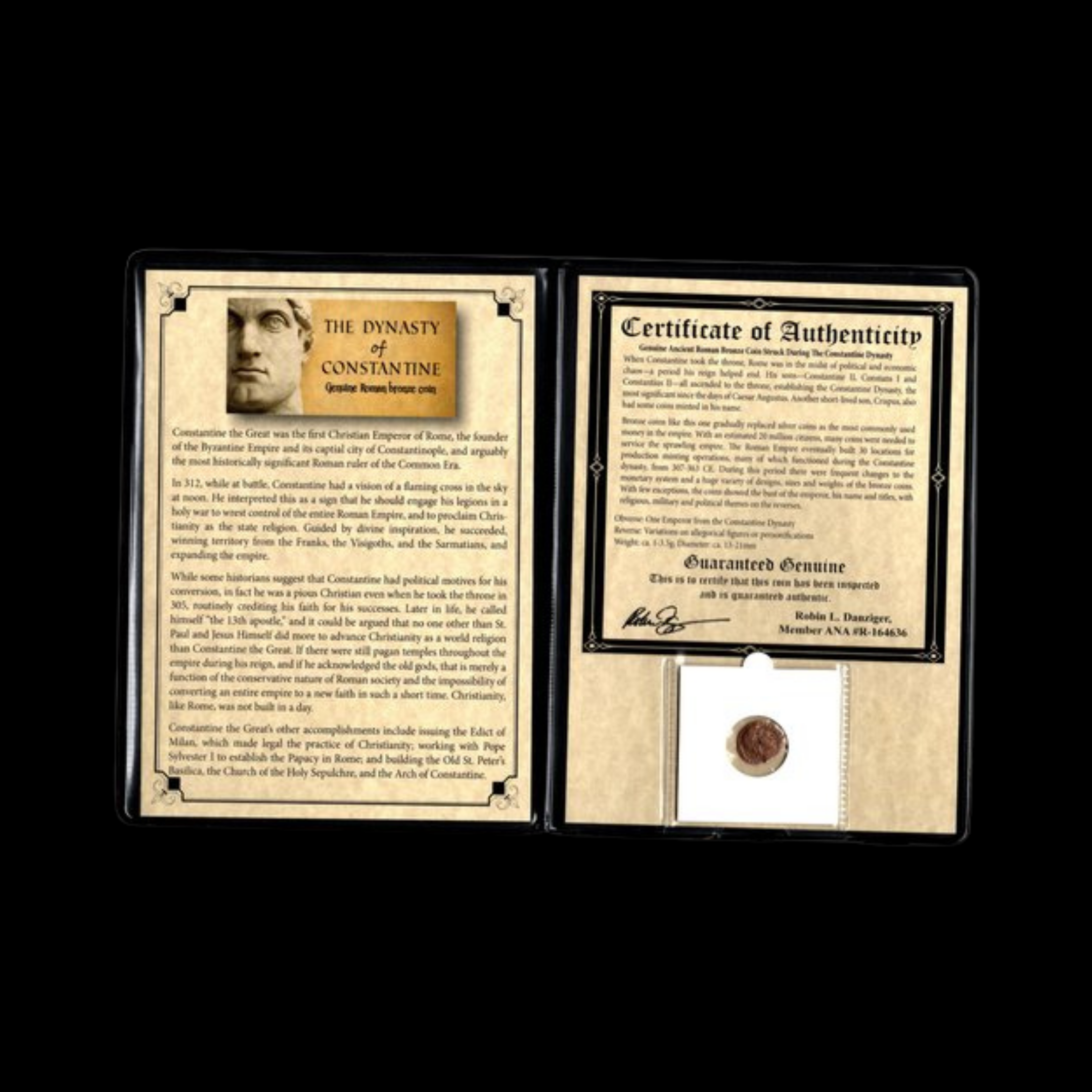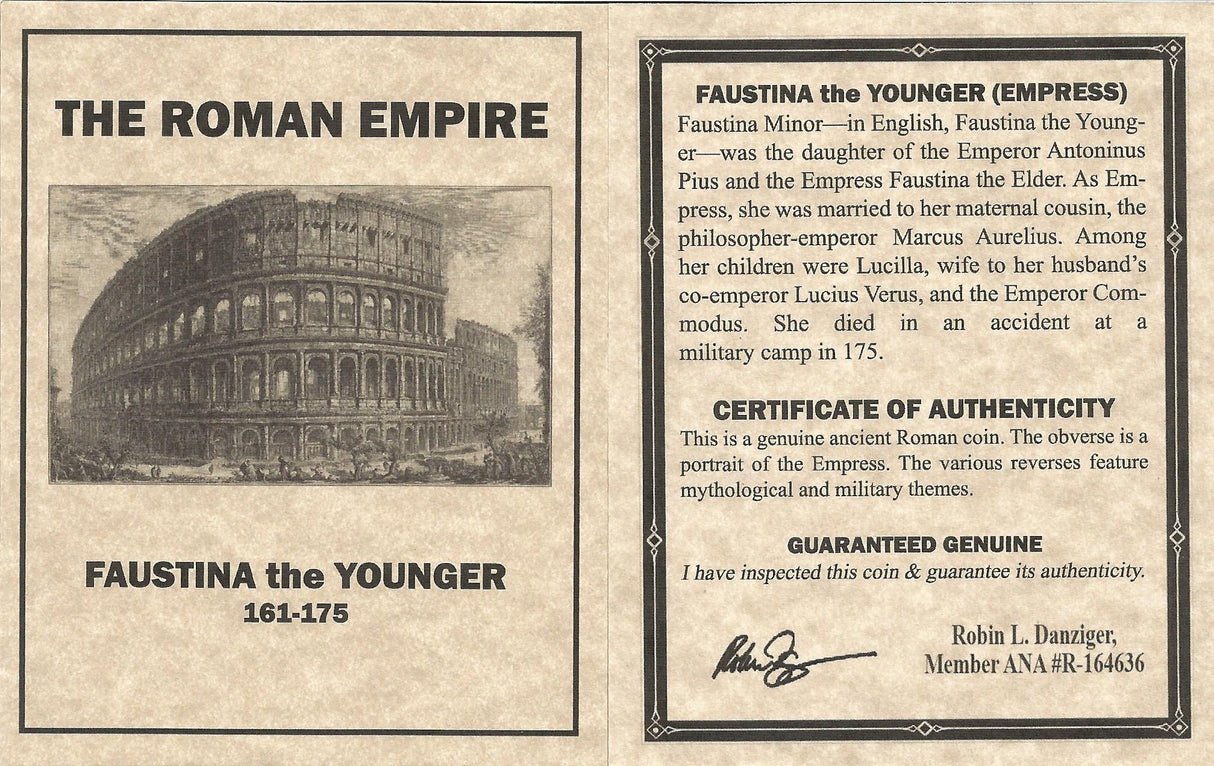 Image 1 of 10
Image 1 of 10

 Image 2 of 10
Image 2 of 10

 Image 3 of 10
Image 3 of 10

 Image 4 of 10
Image 4 of 10

 Image 5 of 10
Image 5 of 10

 Image 6 of 10
Image 6 of 10

 Image 7 of 10
Image 7 of 10

 Image 8 of 10
Image 8 of 10

 Image 9 of 10
Image 9 of 10

 Image 10 of 10
Image 10 of 10











Roman Bronze Coin of Jovian (about 1,661-1,662 years ago)
The coins shown are representative examples of the grade and type, but not the actual specimens for sale. For details on NGC’s grading standards and definitions, please refer to our NGC Grading page.
This bronze coin was issued during the brief reign of Emperor Jovian, who ruled the Roman Empire for only about 8 months between 363 and 364 CE. As the successor to Julian the Apostate and the last ruler connected to the Constantinian dynasty, Jovian presided over a critical transitional period following Julian's failed Persian campaign.
Coin Description:
Front side: Portrait of Emperor Jovian facing right, likely depicted with a pearl diadem and imperial robes, with his name and titles in Latin around the edge.
Back side: Probably features common late Roman imagery such as the emperor holding military standards, Victory crowning the emperor, or possibly Christian symbolism as Jovian reversed Julian's pagan policies.
Technical Details:
Bronze alloy composition
Denomination: Likely an AE3 or similar late Roman bronze denomination
Weight: Approximately 2-3 grams
Diameter: Approximately 18-20 mm
NGC Certified for authentication and preservation
Minted between 363-364 CE
Condition as specified by NGC certification
Historical Significance: Jovian's brief reign marked an important religious pivot in Roman history. The son of Constantius II's bodyguard commander, he was unexpectedly proclaimed emperor by the army following Julian's death during the disastrous Persian expedition. Jovian negotiated a humiliating but necessary peace with Persia, surrendering territories to extricate the stranded Roman army. As the last emperor connected to Constantine's dynasty, he promptly reversed Julian's anti-Christian policies, restoring privileges to the Church. His sudden death after only 8 months in power—likely from carbon monoxide poisoning in an overheated room—cut short what might have been an important reign. This coin represents this brief but pivotal transition in late Roman history.
The coins shown are representative examples of the grade and type, but not the actual specimens for sale. For details on NGC’s grading standards and definitions, please refer to our NGC Grading page.
This bronze coin was issued during the brief reign of Emperor Jovian, who ruled the Roman Empire for only about 8 months between 363 and 364 CE. As the successor to Julian the Apostate and the last ruler connected to the Constantinian dynasty, Jovian presided over a critical transitional period following Julian's failed Persian campaign.
Coin Description:
Front side: Portrait of Emperor Jovian facing right, likely depicted with a pearl diadem and imperial robes, with his name and titles in Latin around the edge.
Back side: Probably features common late Roman imagery such as the emperor holding military standards, Victory crowning the emperor, or possibly Christian symbolism as Jovian reversed Julian's pagan policies.
Technical Details:
Bronze alloy composition
Denomination: Likely an AE3 or similar late Roman bronze denomination
Weight: Approximately 2-3 grams
Diameter: Approximately 18-20 mm
NGC Certified for authentication and preservation
Minted between 363-364 CE
Condition as specified by NGC certification
Historical Significance: Jovian's brief reign marked an important religious pivot in Roman history. The son of Constantius II's bodyguard commander, he was unexpectedly proclaimed emperor by the army following Julian's death during the disastrous Persian expedition. Jovian negotiated a humiliating but necessary peace with Persia, surrendering territories to extricate the stranded Roman army. As the last emperor connected to Constantine's dynasty, he promptly reversed Julian's anti-Christian policies, restoring privileges to the Church. His sudden death after only 8 months in power—likely from carbon monoxide poisoning in an overheated room—cut short what might have been an important reign. This coin represents this brief but pivotal transition in late Roman history.
































